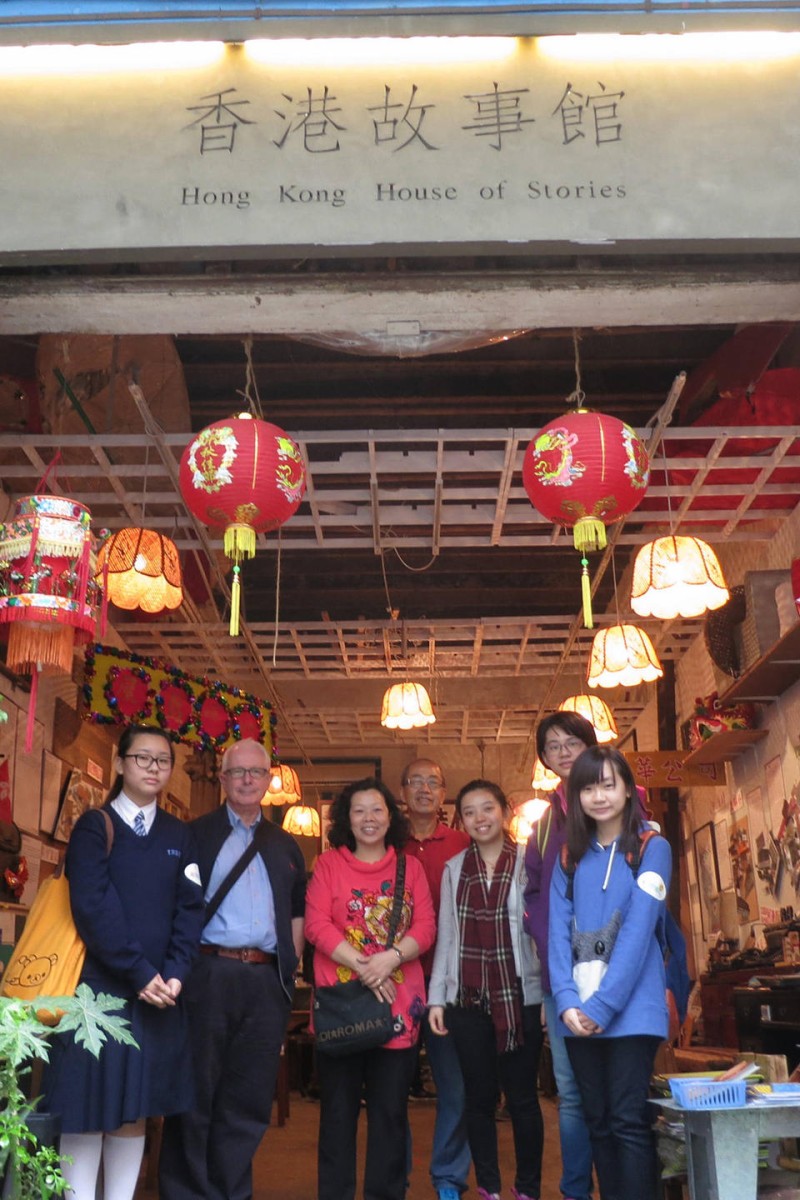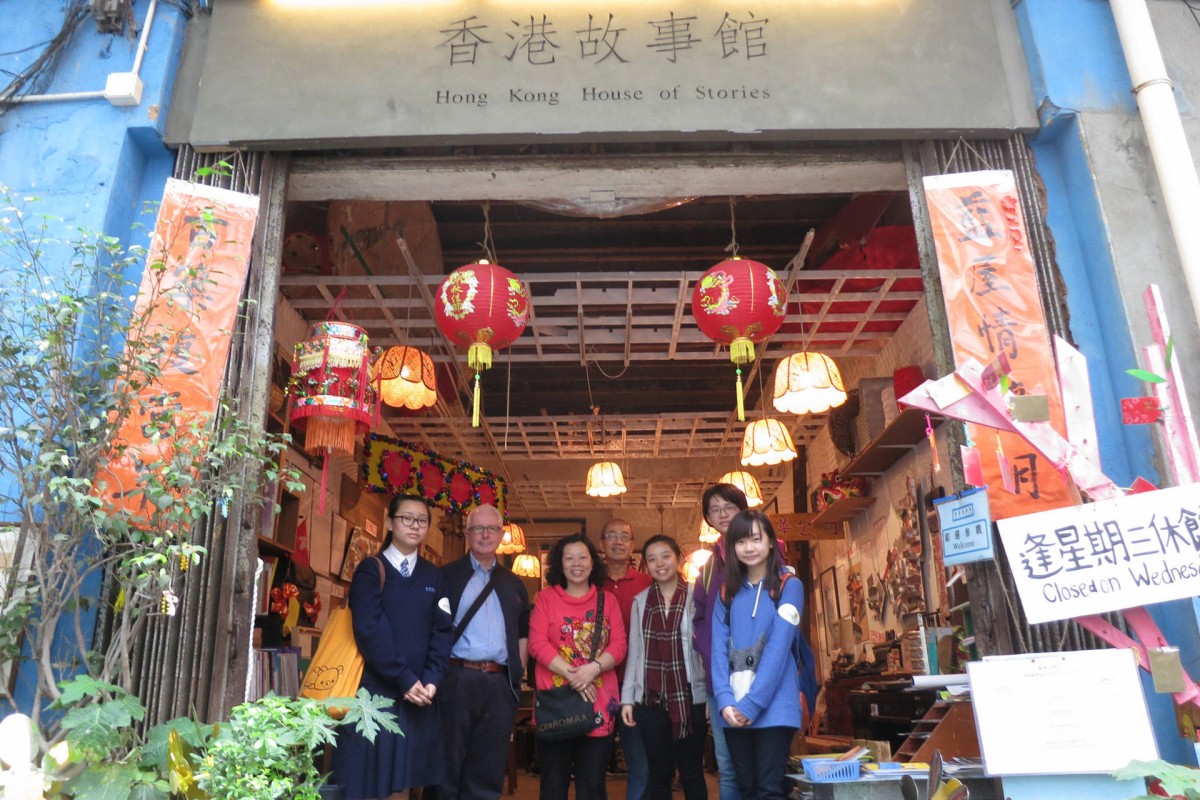
Junior reporters take a tour to find out more about places they know
 Veteran Young Post writer John Millen has taken Junior Reporter Training Course participants on a trip around Hong Kong.
Veteran Young Post writer John Millen has taken Junior Reporter Training Course participants on a trip around Hong Kong.Early last year, Sun Hung Kai Properties' SHKP Reading Club organised "A Letter to My Family", a book review competition to promote reading and communication within families.
Part of the prize included a Junior Reporter Training Course conducted by veteran Young Post writer John Millen, where the winners took a tour of attractions in Hong Kong, such as St James' Settlement's Hong Kong House of Stories and Hong Kong Jockey Club's Racing Museum, and write about them using what they've learned from Millen.
Young Post's junior reporters Charlotte Fong and Tinaz Mirza also attended the course, and this is what they learned ...
Walking through the pages of Wan Chai
Here's an interesting question - where do stories live? Most people would probably answer "in a book", but in one special building in Wan Chai, stories live in a house!
You can find many modern buildings in Wan Chai, but as you cross into Stone Nullah Lane, you will find brightly coloured tong laus (old Chinese buildings). One of them is the Blue House, where the Hong Kong House of Stories museum is located.
Urban renewal takes place all over Hong Kong, and Wan Chai is no exception. The buildings were taken down and the residents were forced to move out. However, over the years they had decided to keep a collection of the various things they have used in the past, ranging from wooden licences to vinyl records.
When you step into the museum, you will feel as if you have travelled back in time a few decades. The numerous ancient exhibits may all look like a beautiful mess at first glance, but if you take a closer look, some of them have very significant meanings. For example, there was a wooden bench that people might have thought was just for visitors to use, but it was actually used to sit on in street food stalls long ago!
But objects don't have feelings, even if they are valuable, and they still don't have the ability to tell stories with a human touch. Therefore, the museum decided to host workshops, exhibitions and activities, like this one I went to.
Mothers may have a hard time taking care of their children, due to having a day job or house work to do, and the House of Stories provides an excellent babysitting service. Not only do they take care of children, they also teach English and how to draw. But the House of Stories is not just a place for children; they also host various activities for adults. For example, on the fourth Thursday of March, they host a mini flea market.
"The aim of this museum is to provide a gathering place for the people from the neighbourhood and a platform to let different people with different backgrounds share their stories," said a guide. "It is not only a museum, it's a storybook of the people of Wan Chai throughout the years."
Charlotte Fong
Racing through time in Happy Valley
We quite literally raced through history when visiting the Hong Kong Racing Museum - breezing through the different significant time periods in a succinct manner. The museum encapsulates artefacts dating back to the middle of the 19th century through to the present day, showing the evolution of Hong Kong's famous sport and leisure activity.
The racing museum had a multitude of captivating artefacts, one of which was the skeleton of three-time champion horse Silver Lining, famous for being the first to earn its owner a million dollars. Although the original skeleton had an unsettling vibe, it is interesting to see the original stature of the legendary horse. However Silver Lining was not the only horse to have its moment of fame; River Verdon is more pony-like in build and was used when common racing horses were difficult to find in Hong Kong. River Verdon was the first Triple Crown winner in Hong Kong and thus has the honour of having its effigy enclosed in a homely stable.
We also learned about the rarity and therefore the speciality of horse races in the past. The museum had a collection of horse racing programmes from the first half of the 20th century. Each programme booklet was intricately designed, detailing the events that would take place on the day. The booklets were colourful and had fancy font which would entice any passerby's attention. In that era, horse races used to be an annual three-day programme and thus was planned and executed with great detail.
The racing museum contains a myriad of spectacular trophies from across the ages, showing the great equestrian achievements of the Jockey Club. The more intricately designed trophies were presented to individual jockeys who then generously allowed the museum to showcase them, whereas the others were presented directly to the club.
Since 1915, the Jockey Club has also strived to create a positive impact within the local community, and boasts a magnificent Community Trophy as part of an entire row that showcases all of the activities that have truly made a difference.
The racing museum is at the Happy Valley racecourse, which is easily accessible by both MTR and bus. It overlooks the Jockey Club racecourse, giving visitors a glimpse of the place where some of the famous horse races took place. The medium-sized museum shows the club's history, yet does not make covering everything a long and tedious task.
Though the museum is one of many in Hong Kong, it is definitely worth a visit if you're in a nearby area as horse racing has played an important role in Hong Kong's culture and history.
Tinaz Mirza